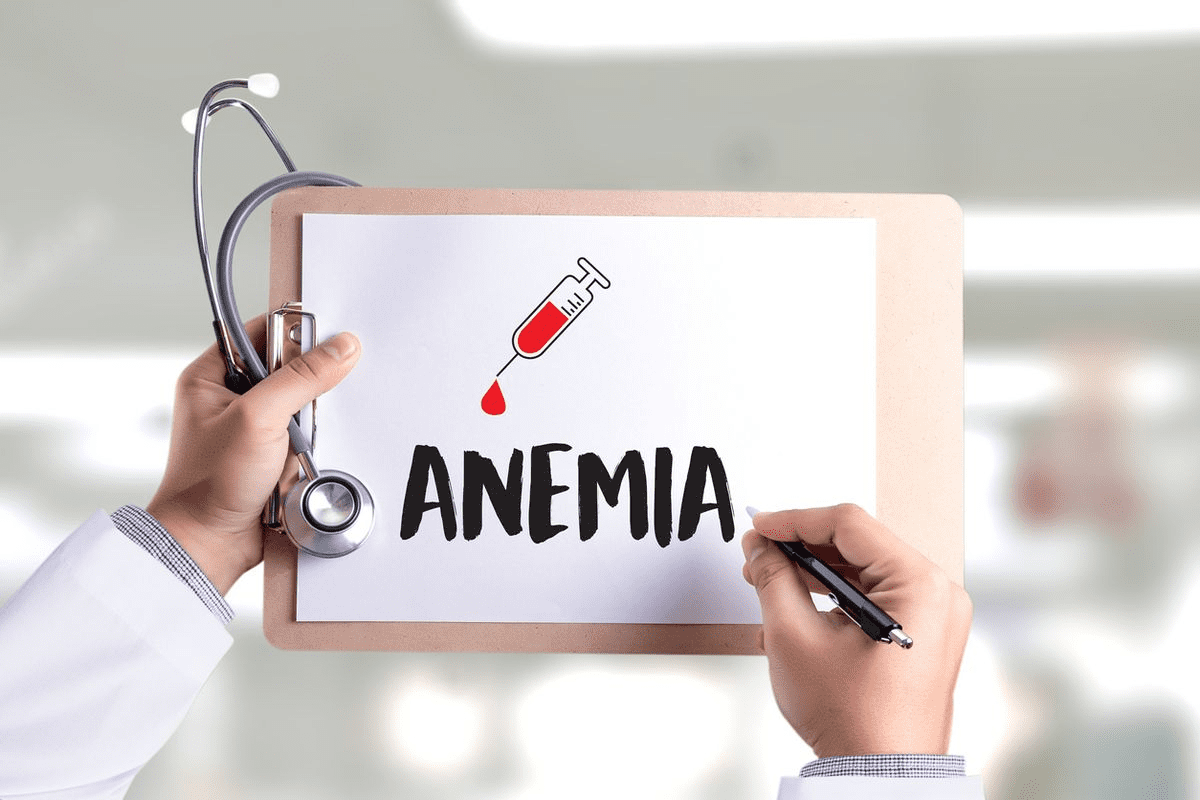Last Updated on November 26, 2025 by Bilal Hasdemir

We are seeing a big change in breast cancer treatment thanks to precision medicine. Targeted therapies are showing great promise. They help patients live longer and have fewer side effects. At Liv Hospital, we use the newest personalized care to make breast cancer medication just right for each patient.
Targeted therapy is different from old chemotherapy. It uses medicines that target specific proteins on breast cancer cells. This helps kill the cancer cells or slow them down. It’s changed how we treat breast cancer, giving patients and their families new hope.
Key Takeaways
- Targeted therapies offer improved survival rates and reduced side effects for breast cancer patients.
- Personalized care allows for tailored treatment plans based on individual cancer biology.
- Targeted therapy uses medicines that target specific proteins on breast cancer cells.
- This approach has revolutionized breast cancer treatment, providing new hope for patients.
- Liv Hospital is at the forefront of innovative breast cancer care, leveraging the latest advances in targeted therapy.
The Evolution of Breast Cancer Treatment
Our understanding of breast cancer has grown, leading to new treatments. Now, we use targeted and personalized methods, not just old ways.
Types of Breast Cancer and Their Molecular Profiles
Breast cancer is not just one disease; it’s many, each with its own traits. We classify it into types like HER2-positive, hormone receptor-positive (HR+), and triple-negative breast cancer (TNBC). This helps us choose the right treatment.
Molecular profiling shows what makes each tumor unique. For example, HER2-positive cancers have too much HER2 protein. This makes them good targets for specific treatments.
| Breast Cancer Subtype | Molecular Characteristics | Common Treatment Approaches |
|---|---|---|
| HER2-positive | Overexpression of HER2 protein | Trastuzumab, Pertuzumab, T-DM1 |
| Hormone Receptor-positive (HR+) | Expression of estrogen and/or progesterone receptors | Endocrine therapy, CDK4/6 inhibitors |
| Triple-Negative Breast Cancer (TNBC) | Lack of HER2, estrogen, and progesterone receptors | Chemotherapy, PARP inhibitors (for BRCA-mutated) |
From Conventional to Precision Medicine
We’ve moved from old chemotherapy to precision medicine. Precision medicine means treatments fit the cancer’s unique traits. This makes treatments better and safer.
Targeted therapies, like those for HER2 or hormone receptors, have helped many. PARP inhibitors for BRCA-mutated cancers are another step forward in precision medicine.
What Is Targeted Therapy for Breast Cancer Treatment?
Targeted therapy is a new way to fight breast cancer. It focuses on the unique traits of cancer cells. This method is different from traditional chemotherapy, which harms both cancer and healthy cells.
Differences from Traditional Chemotherapy
Traditional chemotherapy attacks fast-growing cells, like cancer and hair follicles. This can cause hair loss and nausea. On the other hand, targeted therapy targets specific ways cancer cells grow and survive. This makes it safer for healthy cells and can lead to fewer side effects.
Cancer experts say, “Targeted therapies are designed to exploit specific vulnerabilities in cancer cells, making them a critical part of modern cancer treatment.” Learn more about targeted therapy for breast.
Key Molecular Targets in Breast Cancer Cells
Breast cancer cells have different molecular targets that help them grow. Some of these targets include:
- HER2 protein: This protein is found in about 20% of breast cancers and helps them grow. Drugs like trastuzumab (Herceptin) target this protein.
- Hormone receptors: Many breast cancers are fueled by hormones like estrogen and progesterone. Drugs that block these receptors, like tamoxifen, can be effective.
- CDK4/6 enzymes: These enzymes play a role in the cell cycle and are targeted by drugs like palbociclib, ribociclib, and abemaciclib.
Doctors can pick the best targeted therapy for a patient based on their cancer’s molecular traits. This can lead to better results and fewer side effects.
Trastuzumab (Herceptin): Pioneering HER2-Targeted Therapy
Trastuzumab (Herceptin) is a key drug for HER2-positive breast cancer. It’s a HER2-targeted therapy that targets the HER2 protein on cancer cells. This has greatly improved treatment outcomes for patients.
Mechanism of Action: Blocking HER2 Signaling
Trastuzumab binds to the HER2 protein on cancer cells. This blocks the HER2 signaling pathway. This block stops cancer cells from growing and dying.
The mechanism of action of trastuzumab is complex. It stops the HER2 protein from combining with other HER family members. This is key to stopping cancer cell growth.
Clinical Benefits and Common Side Effects
Trastuzumab has greatly helped patients with HER2-positive breast cancer. Studies show it improves survival and disease-free survival when used with chemotherapy. It’s now a standard treatment for HER2-positive breast cancer.
Trastuzumab is usually safe but can have side effects. It can cause heart problems, like heart failure. Other common side effects include infusion reactions, fatigue, and nausea. It’s important to watch heart function during treatment.
Despite side effects, trastuzumab’s benefits in treating HER2-positive breast cancer are huge. Its targeted action and clinical benefits make it a vital part of modern breast cancer treatment.
Pertuzumab (Perjeta): Complementary HER2 Blockade
Pertuzumab, also known as Perjeta, is a big step forward in treating HER2-positive breast cancer. It’s a monoclonal antibody that targets the HER2 protein. This makes it work well with trastuzumab (Herceptin), another well-known HER2-targeting therapy.
Using both therapies together gives us a strong dual HER2 blockade. This has been shown to greatly improve patient results. Let’s look at how pertuzumab works and its benefits when paired with trastuzumab.
How Pertuzumab Prevents Receptor Dimerization
Pertuzumab stops the HER2 receptor from teaming up with other HER family members. This team-up is key for cancer cells to grow and multiply. By stopping this, pertuzumab blocks the signals that help tumors grow.
The main advantages of pertuzumab’s action include:
- Inhibition of HER2 dimerization: Stops the formation of active signaling complexes.
- Reduced tumor growth: Blocks signals that promote cancer cell growth.
- Enhanced anti-tumor activity: Works better with trastuzumab to block HER2 signaling.
Dual HER2 Blockade: Synergy with Trastuzumab
Combining pertuzumab with trastuzumab is a strong dual HER2 blockade strategy. Trastuzumab binds to the HER2 receptor, while pertuzumab stops it from teaming up with others. This teamwork leads to better stopping of tumor growth and multiplication.
Studies show that this combo, with chemotherapy, boosts survival and time without cancer getting worse in HER2-positive breast cancer patients. For more on how breast cancer spreads, check out this resource.
The perks of dual HER2 blockade include:
- Enhanced efficacy: Better results for patients due to thorough targeting of HER2 pathways.
- Increased overall survival: Seen in studies, showing the combo’s promise.
- Better management of HER2-positive breast cancer: Targets the disease from different angles for better treatment outcomes.
T-DM1 (Kadcyla): Smart Drug Delivery System
T-DM1 (Kadcyla) is a groundbreaking drug that has changed how we treat breast cancer. It combines trastuzumab’s targeting with DM1’s strong chemotherapy. This makes it a powerful choice for HER2-positive breast cancer.
Antibody-Drug Conjugate Technology
The technology behind T-DM1 is a big step forward in cancer treatment. It links a targeted antibody to a chemotherapy drug. This way, the drug goes straight to cancer cells, protecting healthy tissues.
The ADC technology in T-DM1 brings many benefits:
- It targets chemotherapy to HER2-positive cancer cells
- It reduces the harm to healthy tissues compared to old chemotherapy
- It works better because the drug goes directly to the cancer cells
Targeted Delivery of Chemotherapy to Cancer Cells
T-DM1 attaches to the HER2 protein on cancer cells. Then, the drug goes inside the cell, where DM1 kills the cell.
This targeted approach of T-DM1 has many benefits for HER2-positive breast cancer:
- It’s more effective because it targets cancer cells directly
- It causes fewer side effects than traditional chemotherapy
- It could lead to better results for patients because it’s so precise
With its advanced technology, T-DM1 is a hopeful treatment for HER2-positive breast cancer. It’s great for patients who have tried other treatments without success.
PARP Inhibitors for BRCA-Mutated Breast Cancer
PARP inhibitors have changed how we treat BRCA-mutated breast cancer. These drugs target the DNA repair problems in these tumors. They offer a new way to fight cancer that looks very promising.
Olaparib (Lynparza): Exploiting DNA Repair Defects
Olaparib is a key PARP inhibitor for BRCA-mutated breast cancer. It works by blocking the PARP enzyme, which is important for DNA repair. This blockage makes the tumor’s DNA repair problem worse, causing the cells to die.
“The use of PARP inhibitors like olaparib is a big step forward in treating BRCA-mutated breast cancer,” says experts. It shows a move towards more tailored and effective treatments.
Synthetic Lethality in BRCA-Deficient Tumors
The idea of synthetic lethality is key to how PARP inhibitors work in BRCA-mutated tumors. Synthetic lethality happens when a mix of gene defects causes cell death. But a single defect is not enough. In BRCA-mutated breast cancer, the lack of BRCA genes and PARP inhibition stop DNA repair. This leads to the death of tumor cells.
PARP inhibitors use this principle to target cancer cells effectively. They do this with less harm to normal cells.
As we keep looking into PARP inhibitors, their role in treating BRCA-mutated breast cancer is a big step. It’s a move towards better and more personalized cancer treatments.
CDK4/6 Inhibitors: Halting Cell Cycle Progression
CDK4/6 inhibitors have changed how we treat hormone receptor-positive breast cancer. They target the cell cycle, showing great promise when paired with hormone therapy. This has led to better outcomes for patients.
We’ll look into how these inhibitors work and their impact on HR+/HER2- breast cancer. Their development is a big step forward in targeted therapy. It offers a more focused way to treat this type of breast cancer.
Palbociclib, Ribociclib, and Abemaciclib: Mechanisms and Differences
Palbociclib, ribociclib, and abemaciclib are three CDK4/6 inhibitors approved for HR+/HER2- advanced breast cancer. They all block cyclin-dependent kinases 4 and 6. But each has its own unique features.
- Palbociclib was the first to be approved, a major step in treating HR+/HER2- breast cancer.
- Ribociclib has shown similar effectiveness to palbociclib, but with some differences in dosage and side effects.
- Abemaciclib stands out for its continuous dosing and effectiveness in both first-line and subsequent treatments.
Knowing the differences between these drugs helps doctors choose the best treatment for each patient.
Enhancing Endocrine Therapy in HR+/HER2- Disease
Using CDK4/6 inhibitors with hormone therapy is now standard for HR+/HER2- advanced breast cancer. This combo attacks cancer growth and cell cycle machinery. It offers a stronger fight against tumors.
Studies have shown that adding a CDK4/6 inhibitor to hormone therapy boosts survival. This is a big win for patients with HR+/HER2- breast cancer.
As we keep studying CDK4/6 inhibitors, research aims to improve their use. We hope to use them in earlier stages of breast cancer and with other therapies.
Personalized Medicine: Matching Patients to Targeted Therapies
Personalized medicine is changing how we treat breast cancer. It matches patients with the best targeted therapies. This shift moves away from a one-size-fits-all approach to a more tailored method. It considers each patient’s cancer unique characteristics.
Biomarker Testing and Treatment Selection
Biomarker testing is key in choosing the right therapy for breast cancer patients. It finds specific genetic mutations or protein expressions. This helps decide the best treatment plan.
HER2 testing is one example. It shows who might benefit from HER2-targeted therapies like trastuzumab.
Other biomarkers like hormone receptors (ER and PR) and BRCA1/2 mutations also guide treatment choices. The table below lists important biomarkers and their targeted therapies.
| Biomarker | Targeted Therapy |
|---|---|
| HER2 positive | Trastuzumab, Pertuzumab |
| BRCA1/2 mutation | Olaparib |
| Hormone receptor positive | Palbociclib, Ribociclib, Abemaciclib |
Overcoming Resistance to Targeted Therapies
Targeted therapies have greatly improved breast cancer treatment. But, resistance to these treatments is a big challenge. Researchers are working on new ways to fight this, like combining therapies and finding new agents.
For instance, mixing CDK4/6 inhibitors with endocrine therapy is showing promise. It helps beat resistance in hormone receptor-positive breast cancer. Also, studying how resistance works can lead to new treatments.
By deepening our knowledge of breast cancer and using the latest research, we can make treatment plans better. This will help improve patient outcomes.
Conclusion: Advancing Breast Cancer Care Through Targeted Approaches
We’ve made big strides in breast cancer treatment with new targeted therapies. These cancer drugs for breast cancer have changed how we care for patients. They offer treatments that are both precise and effective.
Now, we can tailor treatments based on the unique molecular profiles of breast cancer cells. This approach is all about personalized medicine. Drugs like Trastuzumab (Herceptin), Pertuzumab (Perjeta), and T-DM1 (Kadcyla) have greatly helped those with HER2-positive breast cancer.
Also, new drugs like PARP inhibitors and CDK4/6 inhibitors have opened up new possibilities. They offer hope to patients with BRCA-mutated and hormone receptor-positive breast cancer.
As we keep pushing forward with targeted therapy for breast cancer, we’re getting closer to our goal. We aim to provide top-notch healthcare with full support for patients from around the world. By matching patients with the right treatments, we can make treatments more effective and improve their quality of life.
FAQ
What is targeted therapy for breast cancer?
Targeted therapy for breast cancer uses special medicines to attack cancer cells. It tries to avoid harming healthy cells. It’s often used with other treatments like chemotherapy or hormone therapy.
How does targeted therapy differ from traditional chemotherapy?
Traditional chemotherapy attacks all fast-growing cells. Targeted therapy, on the other hand, targets specific molecules in cancer cells. This makes it more precise.
What are some common molecular targets in breast cancer cells?
Common targets include HER2, hormone receptors like estrogen and progesterone, and BRCA mutations.
What is trastuzumab, and how does it work?
Trastuzumab, or Herceptin, blocks the HER2 protein on cancer cells. This slows or stops their growth. It’s used for HER2-positive breast cancer.
What are the benefits of using pertuzumab in combination with trastuzumab?
Using pertuzumab with trastuzumab creates a stronger block against HER2. This has been shown to improve outcomes for patients with HER2-positive breast cancer.
How does T-DM1 (Kadcyla) work, and what are its benefits?
T-DM1 is a special medicine that carries chemotherapy directly to cancer cells. This reduces side effects and boosts effectiveness. It’s for HER2-positive breast cancer.
What are PARP inhibitors, and how do they work in BRCA-mutated breast cancer?
PARP inhibitors, like olaparib, target DNA repair defects in BRCA-mutated cancer cells. They cause these cells to die, which is a big advantage.
How do CDK4/6 inhibitors work, and what are their benefits in hormone receptor-positive breast cancer?
CDK4/6 inhibitors, such as palbociclib, stop cell cycle progression. This makes endocrine therapy more effective. It improves outcomes for hormone receptor-positive, HER2-negative breast cancer.
What is personalized medicine, and how does it relate to targeted therapy for breast cancer?
Personalized medicine matches patients with the right treatments based on biomarker tests. This ensures patients get the best treatment for their cancer type.
How can resistance to targeted therapies be overcome?
To beat resistance, doctors use combination therapies or switch to other targeted treatments. They also look for new targets and treatments.
What are some common side effects of targeted therapies for breast cancer?
Side effects vary by medication. They can include heart damage, fatigue, and skin rash, among others.
Are targeted therapies available for all subtypes of breast cancer?
Not all breast cancer subtypes have targeted treatments yet. But, research is ongoing to find new therapies for different types.
References
- Breastcancer.org. (2025, June 10). Targeted Therapy Medicines: What They Are and How They Work. Retrieved from https://www.breastcancer.org/treatment/targeted-therapy BreastCancer.org
- Breast Cancer Research Foundation. (n.d.). Targeted Therapy for Breast Cancer. Retrieved from https://www.bcrf.org/about-breast-cancer/targeted-therapy-breast-cancer/ Breast Cancer Research Foundation
- National Breast Cancer Foundation. (n.d.). Targeted Therapy. Retrieved from https://www.nationalbreastcancer.org/breast-cancer-targeted-therapy/ National Breast Cancer Foundation
- Breast Cancer Now. (n.d.). Targeted (biological) therapy. Retrieved from https://breastcancernow.org/about-breast-cancer/treatment/targeted-therapy breastcancernow.org
- National Cancer Institute. (n.d.). Targeted Therapy Drug List by Cancer Type. Retrieved from https://www.cancer.gov/about-cancer/treatment/types/targeted-therapies/approved-drug-list








